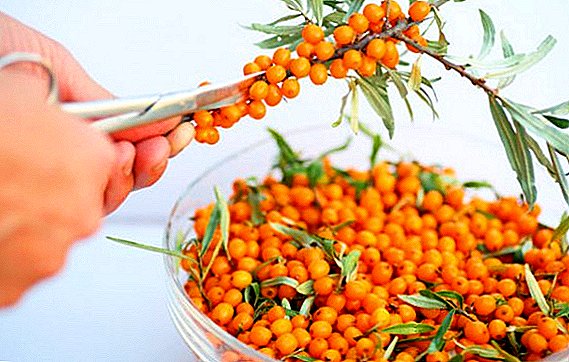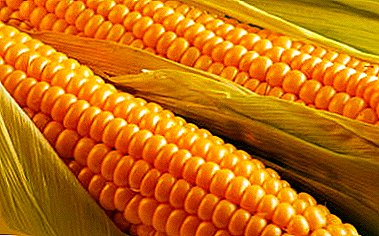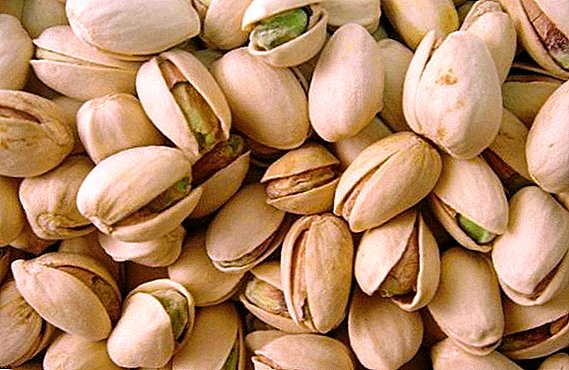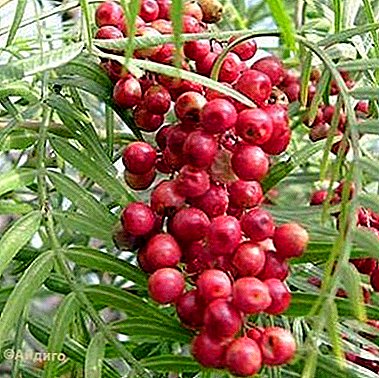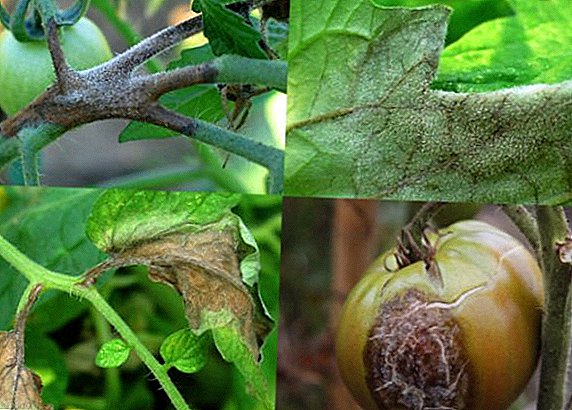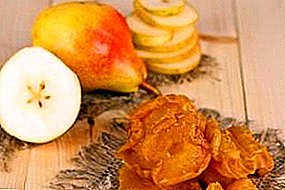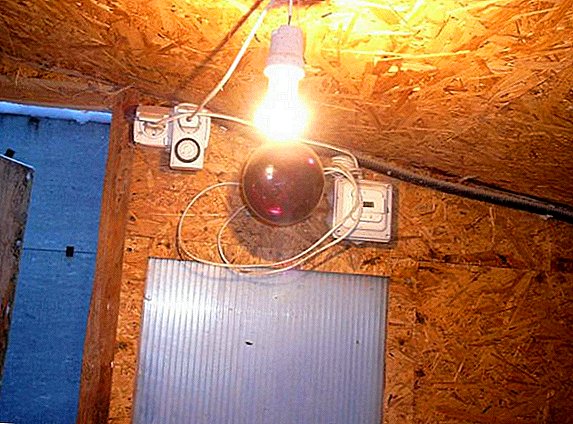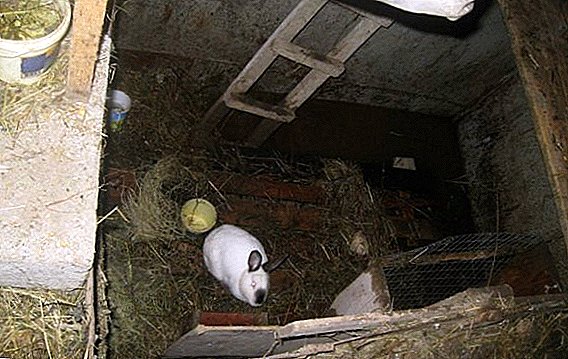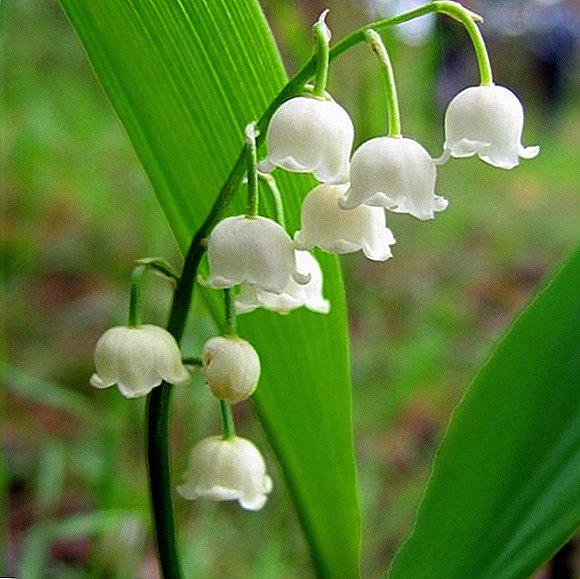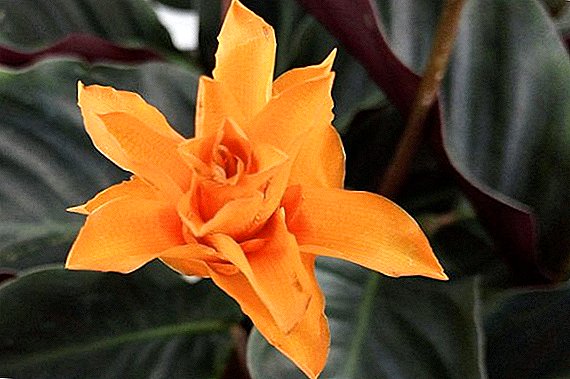 Today, the conversation will be about one of the representatives of the Magranty family, Calathea krokat. She is beautiful not only for its original shape and coloring foliage, but also for flowers.
Today, the conversation will be about one of the representatives of the Magranty family, Calathea krokat. She is beautiful not only for its original shape and coloring foliage, but also for flowers.
And so that you can be convinced of its beauty, get acquainted with the conditions of successful cultivation and the requirements for care.
Botanical description of the plant
Calathea Crocata (Calathea crocata, saffron) is a decorative flowering plant originally from Central and South America, which can be described as follows:
- It has a small height of about 45 cm.
- The shoots are located underground with the root system, a rosette of leaves sprouted from them located on short petioles sprouts.
- The color of the leaves is bright green, if you turn it over, it is purple, the shape is an elongated oval. Veins on them form a beautiful pattern, the edges are slightly wavy.
- Krokata is one of 2 flowering plant species of the genus Calathea. Flowering occurs in winter, lasts about 2 weeks. The flowers are tubular, grow on straight elongated peduncles from the center of the rosettes. Their color is orange, the bracts are red. The aroma of the flower can not be called pleasant.
Did you know? Calathea owes its name to the ancient Greeks: they called this word baskets, which were woven from its leaves.
Conditions for successful home cultivation
Calatheum crocata is very demanding to care: any deviation can lead to the death of the plant. 
Location and lighting
This culture reacts poorly both to direct sunlight and to strong shading. At the same time the color of the leaves becomes dull, from the sun burns on them. The best place for the plant will be the window overlooking the north-west or north-east. If there is no opportunity to put the pot in such a place, make a white paper fence attached to the window glass from the sun.
Also, there should be no heaters in the vicinity of the pot - from such a neighborhood, Calathea can die.
Temperature conditions
The permissible temperature range for growing saffron calathea is + 18 ... + 24 ° С. It will be destroyed in the same way as cold below + 18 ° C and heat above + 24 ° C. The optimum level will be + 20 ... + 22 ° С.
Important! It is necessary to completely eliminate sudden changes in temperature and drafts.If you want to ventilate a room in the summer, remove the pot with a croquet from the window, and in the winter, move it to another room during ventilation. Do not keep the window in the mode of ventilation, if there is a pot with a plant near it.

Air humidity
The minimum allowable level of air humidity is 65%, the optimum is 75%. It is important to consider that the plant does not fit pouring water into the pan. Wiping leaves with a damp cloth, spraying moss or pebbles laid on a tray is allowed. Good growing conditions are observed in the florarium or orchidarium.
Familiarize yourself with other types and varieties of indoor Kalat.
Peculiarities of home care
Calatheus croatia needs:
- water;
- spray;
- feed up;
- cut off;
- transplant.
Watering
 It is necessary to ensure that in the summer the land in the pot was constantly wet. In winter, however, a pause should be maintained until about 2 cm of the top layer of the earth dries out. The interval between irrigation depends on the specific environmental conditions and is approximately 2-3 days in summer and 7 days in winter. It is recommended to pre-settle the water and bring it to a warm state so that its temperature is 2-3 ° C higher than that of the air in the room.
It is necessary to ensure that in the summer the land in the pot was constantly wet. In winter, however, a pause should be maintained until about 2 cm of the top layer of the earth dries out. The interval between irrigation depends on the specific environmental conditions and is approximately 2-3 days in summer and 7 days in winter. It is recommended to pre-settle the water and bring it to a warm state so that its temperature is 2-3 ° C higher than that of the air in the room.
Of all the methods the plant is more suitable for watering with a watering can under the leaves, so as not to wet them or the outlet. At the same time water should not remain in the pan.
Spraying
It is better to avoid spraying the leaves - use a spray of expanded clay, pebbles or peat spread out on a pallet to moisten. You can also purchase a special humidifier.
Top dressing
From the beginning of March to the end of autumn, every 15 days you need to feed Calathea crocate with fertilizers for the decorative and deciduous representatives of the flora. Their composition should be potassium, and calcium and nitrogen should be avoided.
Important! On the excess of Calathea's top dressing, saffron responds with poor growth, therefore the consumption rate indicated on the package should be halved.Before fertilizing the flower, be sure to pour the soil.
Pruning
Formative pruning plants do not hold. Crop only brown, wilted or ugly leaves at their base, as well as flower stalks after flowering. 
Transfer
Until this type of calathea is 3 years old, it is transplanted annually in April. An adult representative of the species can grow without a transplant for 2-3 years. The process happens like this:
- Prepare a pot with drainage holes 2 cm in diameter larger than the old, preferably clay.
- Lay out a drainage layer of pebbles, expanded clay, bricks bricks, etc., on top of the drainage - a layer of moss.
- Slightly fill the tank with a special mixture for Marantovykh or mix the leaf ground (1 part), humus (1 part), peat (1 part), sea sand with fine grains of sand grains (1/2 parts), adding a little wood ash and pine bark. Also suitable hydroponics.
- Water the soil in an old pot, transfer the plant to a new container. Roots can be gently shaken off or rinsed under warm water, but not unraveled so as not to damage.
- Pour the soil mixture, pour.
Breeding
In order to propagate the calathea of the crocate, one can divide the bush, prepare the cuttings, or plant the seeds.
Dividing bush
Shrub dividing is the best method for breeding during transplantation. The bush, taken out of the ground, is divided into parts so that each of them has enough roots and leaves. The rules of care remain the same. 
Cuttings
The cuttings are cut to a length of 15 cm, the sections are cut, planted in the ground or water until the roots appear. Caring for them, as well as for adult plants.
Seeds
It is practically impossible to propagate this type of Marantovic family in seeds at home. The implementation of this method is only possible for experienced florists. Seeds are germinated, planted in the ground, watered, covered with film or glass, constantly airing. When the shoots appear leaves, they need to swoop down.
Did you know? In the morning, the leaves of Calathea are downstairs, and in the evening - at the top, so it was called the "prayer flower."
Difficulty growing
When growing a calathe, you can face such difficulties:
- Low humidity - the leaves at the edges dry.
- Lack of water - the leaves dry up.
- Low temperature or draft - the leaves turn yellow.
- Brown spot on the leaves - sunburn.
- Stalk rotting - excess watering.
These problems can be solved by correcting errors in the care of the plant.
Such pests are dangerous:
- spider mite;
- scytworm and thrips.
 Against them are effective soap solution, tinctures of garlic, nettle, ginger, dandelion, pine needles, as well as insecticides. If you do not take any measures, the plant can get sick and wither. A dangerous disease for Calathea is rot, caused by improper care.
Against them are effective soap solution, tinctures of garlic, nettle, ginger, dandelion, pine needles, as well as insecticides. If you do not take any measures, the plant can get sick and wither. A dangerous disease for Calathea is rot, caused by improper care.
Thus, kalateya krokata is an ornamental plant that requires a lot of attention. To preserve the beauty of the leaves and achieve flowering, you need to carefully care for it - in gratitude, you will receive the beautiful decoration of your home.


